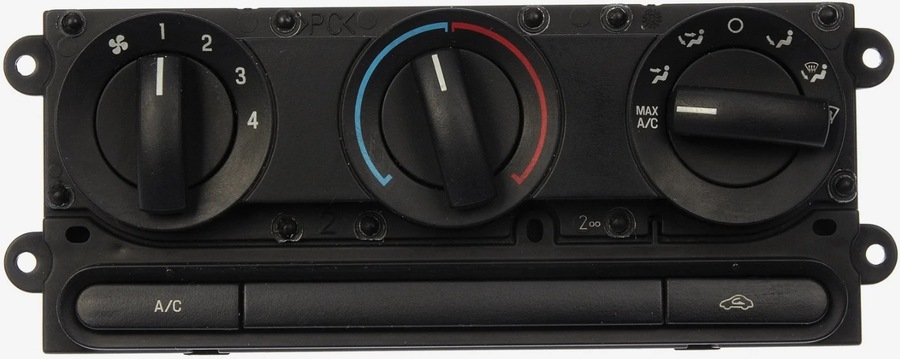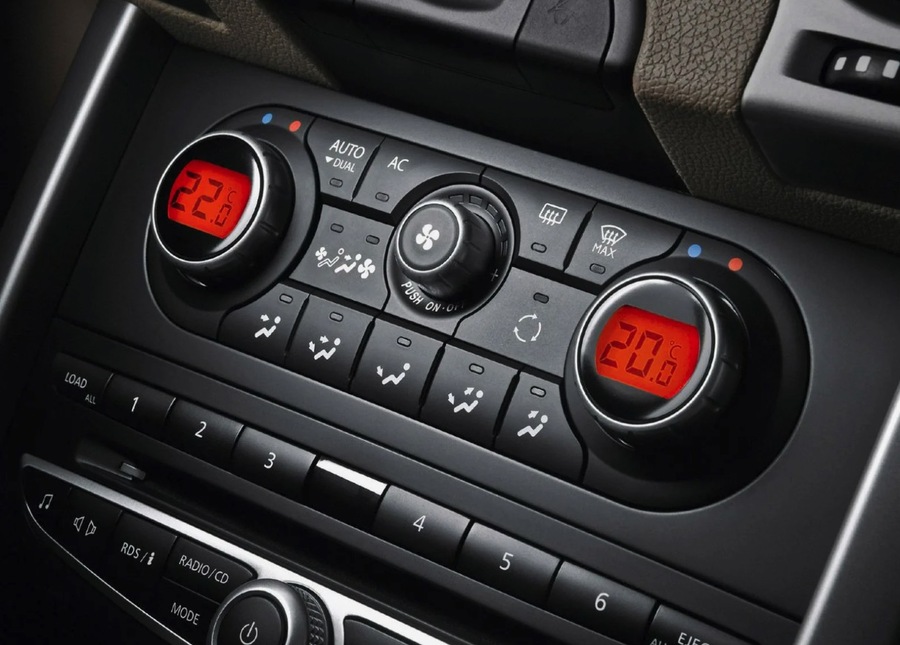Climate control in cars is essential for creating a comfortable microclimate for both the driver and passengers. It ensures the vehicle’s interior remains within optimal temperature and humidity ranges, which are crucial for comfort and safety during drives. When you rent a car in Dubai, having an effective climate control system is especially important. This article delves into the intricacies of climate control, its history, functioning, types, and significance, particularly in hot climates like the UAE.
What is Climate Control in a Car?
Climate control in a car refers to the automated system that regulates the interior environment of the vehicle. This system maintains a consistent and comfortable temperature and humidity level, ensuring a pleasant atmosphere regardless of external weather conditions. Suitable conditions for humans inside a car are typically considered to be a temperature range of +22 to +25°C and a humidity level of 65 to 80%. Climate control systems enhance the driving experience by reducing fatigue and discomfort caused by extreme temperatures, making long journeys more enjoyable and less tiring. Furthermore, they contribute to safety by preventing the driver from becoming too hot or too cold, which can impair concentration and reaction times.
History of Climate Control in Cars
Early Innovations and Milestones
The journey of climate control systems in vehicles is fascinating, marked by significant innovations and technological advancements:
– 1902: The first air conditioner was invented by American inventor Willis Haviland Carrier. This groundbreaking invention laid the foundation for modern climate control systems. Carrier’s design aimed to control humidity and temperature, which was initially intended for industrial applications.
– 1906: Carrier received a patent for his “air treatment apparatus,” which was a significant milestone in the development of air conditioning technology. This invention marked the beginning of controlled air environments, which would later be adapted for use in vehicles.
– 1954: The first integrated heating, ventilation, and air conditioning (HVAC) system appeared in the Nash Ambassador. Called the All-Weather Eye, it was pioneering in its use of an electromagnetic clutch in the air conditioner drive and its design allowed for further heating of the cooled air if necessary. This innovation set the stage for modern automotive climate control systems by integrating heating and cooling into a single unit, capable of maintaining a comfortable interior environment in varying weather conditions.

Types of Climate Control Systems
Climate control systems in cars can be categorized based on the number of zones they regulate:
– Single-zone: Controls the climate for the entire cabin uniformly. This is the simplest form of climate control, suitable for smaller vehicles where the entire interior can be maintained at a consistent temperature.
– Dual-zone: Allows separate climate control for the driver and front passenger. This system provides increased comfort by enabling the driver and front passenger to set different temperatures according to their preferences, addressing individual comfort needs.
– Three-zone: Adds an additional zone, typically for the rear passengers. This setup is common in larger vehicles and SUVs, ensuring that rear-seat occupants also enjoy a comfortable environment.
– Four-zone: Provides individual climate control for all four primary seating positions, enhancing comfort for each occupant. This sophisticated system is often found in luxury vehicles, offering personalized climate settings for maximum comfort for all passengers.
How Climate Control Works
The operation of climate control in a car involves a sophisticated interplay of sensors, fans, and air distribution mechanisms:
- Temperature Sensors: These sensors measure the temperature both inside and outside the car to provide accurate data for the climate control system. This information is crucial for the system to make adjustments and maintain the desired interior conditions.
- Air Intake: A fan draws air from the external environment into the cabin. This air is then filtered to remove dust and pollutants, ensuring that only clean air enters the vehicle’s interior.
- Air Division: The incoming air is divided into two streams: one directed to the heater (stove) for warming and the other to the air conditioner evaporator for cooling. This division allows the system to simultaneously heat and cool air, achieving the desired temperature efficiently.
- Mixing and Distribution: The warm and cool air streams are then mixed to achieve the desired temperature. This mixed air is distributed throughout the cabin via a system of air ducts and deflectors. The air distribution system ensures that air is evenly spread across the cabin, reaching all occupants.
- Adjustment: The system can be adjusted manually using controls on the control panel or operate automatically to maintain the set parameters. Automatic mode uses pre-set preferences and sensor data to adjust the temperature and airflow without driver intervention, providing a hassle-free experience.
Advantages and Disadvantages of Climate Control
Advantages
– Comfort: Maintains a consistent and comfortable environment, enhancing the overall driving experience. A stable interior climate reduces the physical stress on occupants, especially during long drives.
– Safety: Prevents driver fatigue and improves focus by providing a stable climate. Extreme temperatures can distract drivers or make them drowsy, increasing the risk of accidents.
– Convenience: Automatic systems reduce the need for manual adjustments, allowing the driver to focus on driving. Modern climate control systems can adjust settings dynamically based on changing conditions, offering a seamless experience.
Disadvantages
– Cost: Advanced climate control systems can be expensive to install and maintain. The initial cost of vehicles equipped with sophisticated climate control can be higher, and repairs can also be costly.
– Complexity: The systems can be complex, making repairs and troubleshooting more challenging. The integration of electronic controls and multiple sensors requires specialized knowledge for maintenance and repairs.
– Energy Consumption: Climate control systems can increase fuel consumption, particularly in extreme weather conditions. Running the air conditioner or heater continuously can put additional load on the engine, reducing fuel efficiency.

Manufacturers of Climate Control Equipment
Several companies specialize in the production of climate control systems for vehicles, known for their innovation and reliability:
– Carrier: A pioneer in air conditioning technology, Carrier continues to innovate in the field of climate control. Known for their advanced HVAC solutions, Carrier systems are used in various industries, including automotive.
– H-THERMO: Known for high-quality HVAC systems tailored for automotive applications. H-THERMO systems are designed for efficiency and durability, making them a popular choice among car manufacturers.
– Webasto: A leading supplier of heating, cooling, and ventilation systems for vehicles. Webasto is renowned for their innovative solutions, including sunroofs and convertible roofs, in addition to climate control systems.
– Indel B: Offers a range of climate control solutions, particularly known for their reliability and efficiency. Indel B products are widely used in commercial and recreational vehicles, providing comfort and convenience.
Importance of Climate Control in Hot Climates
In hot countries like the UAE, climate control systems are not just a luxury but a necessity. The extreme temperatures can make driving uncomfortable and even hazardous without proper climate regulation. Here are some reasons why climate control is essential in such regions:
– Heat Mitigation: The intense heat can cause discomfort and heat-related health issues. Climate control systems help maintain a cool and comfortable cabin temperature, preventing heat exhaustion and dehydration.
– Humidity Control: High humidity levels can exacerbate the feeling of heat and cause sweating. Effective climate control systems manage humidity levels, enhancing comfort by reducing excess moisture in the air.
– Vehicle Protection: Extreme heat can damage a vehicle’s interior and components. Climate control systems help protect the vehicle by maintaining a stable interior environment, preventing warping, cracking, and other heat-related damages.
– Improved Concentration: A comfortable driving environment helps maintain the driver’s concentration and alertness, reducing the risk of accidents caused by discomfort or heat-induced fatigue.
Conclusion
Climate control in cars is a critical feature that enhances comfort, safety, and convenience for drivers and passengers. From its historical origins with Willis Haviland Carrier’s invention to the sophisticated multi-zone systems of today, climate control technology has significantly evolved. Whether in single-zone or advanced four-zone configurations, these systems play a vital role in modern vehicles. In hot climates like the UAE, they are indispensable, ensuring that drivers and passengers can enjoy a comfortable and safe journey despite the extreme weather conditions outside.

Skydiver, vegan, hiphop head, International Swiss style practitioner and AIGA member. Performing at the fulcrum of design and function to save the world from bad design. I am 20 years old.


